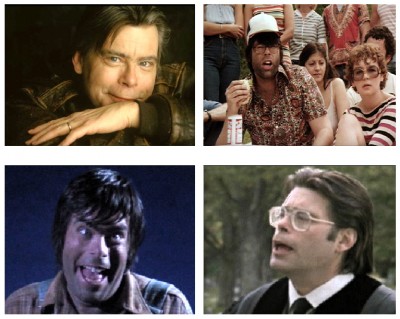 (as stated in a 1992 interview):
(as stated in a 1992 interview):
LADY IN A CAGE (1964)
Lady in a Cage is a classic film that few people in the modern generations are aware of. It was one of the few actual films directed by Walter Garuman, who spent the vast majority of his career doing television work. The film was not a major hit, but remains something of an underground spectacle to this day. The story begins with wealthy widow Cornelia Hilyard (Olivia de Havilland) who lives with her son Malcolm (William Swan) in a luxurious home. She has recently injured her hip and had an elevator installed so she wouldn’t have to climb the stairs. After her son leaves for a week on business, she is left alone. Unfortunately for her, the electricity dies as she is going to the second floor in the elevator.
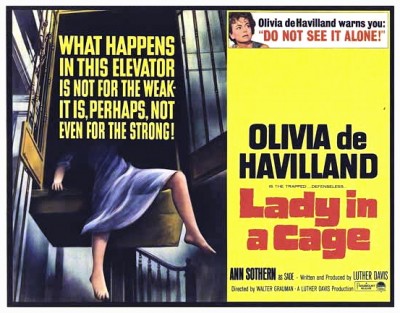 The elevator stops midway and she is left stuck inside with only a radio. In the sweltering heat, she quickly begins losing it and frantically rings the elevator alarm to attract attention. The alarm attracts attention, but unfortunately it is from a drunk (Jeff Corey) who sneaks in to steal some booze and appliances. He recruits an aging prostitute (Ann Sothern) to help him ransack the place, but they are stopped by a gang of hoodlums who decide that they want all of the property for themselves. The situation proceeds to become quite violent and suspenseful from there, all the while Cornelia is left helpless inside of the elevator while thieves steal from her house and harass her. The three hoodlums, Randall, Elaine, and Essie, are played by James Caan, Jennifer Billingsley, and Rafael Campos. The acting in this film is pretty good, although I found to be very annoying by the end of the film. Jeff Corey does a good job as a drunk, although some scenes are a little over the top. James Caan draws a lot of inspiration from Marlon Brando and even looks just like him in some scenes. This movie was his first and he does a good job of portraying a psychotic criminal. If you can look past the plot holes and some overacting, this film can be very enjoyable. The ending is quite suspenseful and the slow buildup will have you wondering about what will happen next.
The elevator stops midway and she is left stuck inside with only a radio. In the sweltering heat, she quickly begins losing it and frantically rings the elevator alarm to attract attention. The alarm attracts attention, but unfortunately it is from a drunk (Jeff Corey) who sneaks in to steal some booze and appliances. He recruits an aging prostitute (Ann Sothern) to help him ransack the place, but they are stopped by a gang of hoodlums who decide that they want all of the property for themselves. The situation proceeds to become quite violent and suspenseful from there, all the while Cornelia is left helpless inside of the elevator while thieves steal from her house and harass her. The three hoodlums, Randall, Elaine, and Essie, are played by James Caan, Jennifer Billingsley, and Rafael Campos. The acting in this film is pretty good, although I found to be very annoying by the end of the film. Jeff Corey does a good job as a drunk, although some scenes are a little over the top. James Caan draws a lot of inspiration from Marlon Brando and even looks just like him in some scenes. This movie was his first and he does a good job of portraying a psychotic criminal. If you can look past the plot holes and some overacting, this film can be very enjoyable. The ending is quite suspenseful and the slow buildup will have you wondering about what will happen next.
LET’S SCARE JESSICA TO DEATH (1971)
The movie follows a trio of ex-hippies – Jessica (Zohra Lampert), her husband Duncan (Barton Heyman), and their friend Woody (Kevin O’Connor) – who move from the bustle of New York City to a quite New England farmhouse to allow Jessica to convalesce after a recent stay in a mental institution. Upon arriving, they discover a mysterious girl, Emily, who has been squatting in the farmhouse. Since she doesn’t seem to have any place to go, the trio invite her to stay. As the movie progresses, it becomes evident that Emily may be more than a simple wanderer (at least in the eyes of Jessica) and her increasingly malevolent behavior leads to tragic results. That rarest of rarities, a subtle, character-driven horror movie, Let’s Scare Jessica To Death (1971) was something of an anomaly even when it was released. No longer constrained by the shackles of censorship, horror films were pushing the limits of sex and gore; increasingly the goal was to shock and titillate rather than suggest and scare.
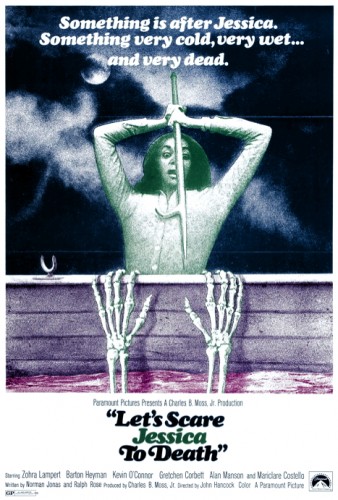 In the midst of this exploitation explosion, Let’s Scare Jessica To Death must have seemed downright quaint. The movie had no nudity, no severed body parts, no entrails, and comparatively little blood. So what did it have? An intelligent script with plenty of genuine scares, a great deal of moody atmosphere, an intriguing subtext regarding 1960s drug culture, and one of the best-ever female performances in a horror film. Let’s Scare Jessica To Death is, quite simply, one of the best ghost stories ever filmed.
In the midst of this exploitation explosion, Let’s Scare Jessica To Death must have seemed downright quaint. The movie had no nudity, no severed body parts, no entrails, and comparatively little blood. So what did it have? An intelligent script with plenty of genuine scares, a great deal of moody atmosphere, an intriguing subtext regarding 1960s drug culture, and one of the best-ever female performances in a horror film. Let’s Scare Jessica To Death is, quite simply, one of the best ghost stories ever filmed.
THE EXORCIST (1973)
Novelist William Peter Blatty based his best-seller on the last known Catholic-sanctioned exorcism in the United States. Blatty transformed the little boy in the 1949 incident into a little girl named Regan, played by 14-year-old Linda Blair. Suddenly prone to fits and bizarre behavior, Regan proves quite a handful for her actress-mother, Chris MacNeil (played by Ellen Burstyn, although Blatty reportedly based the character on his next-door neighbor Shirley MacLaine). When Regan gets completely out of hand, Chris calls in young priest Father Karras (Jason Miller), who becomes convinced that the girl is possessed by the Devil and that they must call in an exorcist: namely, Father Merrin (Max von Sydow).
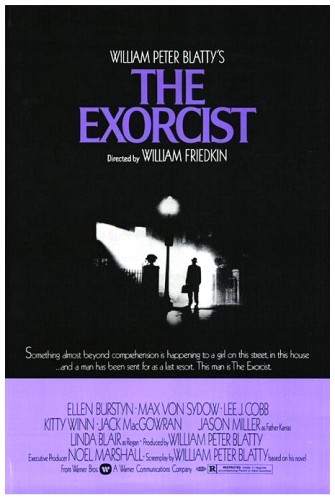 His foe proves to be no run-of-the-mill demon, and both the priest and the girl suffer numerous horrors during their struggles. The Exorcist received a theatrical re-release in 2000, in a special edition that added eleven minutes of footage trimmed from the film’s original release and digitally enhanced Chris Newman’s Oscar-winning sound work.
His foe proves to be no run-of-the-mill demon, and both the priest and the girl suffer numerous horrors during their struggles. The Exorcist received a theatrical re-release in 2000, in a special edition that added eleven minutes of footage trimmed from the film’s original release and digitally enhanced Chris Newman’s Oscar-winning sound work.
HALLOWEEN (1978)
Halloween was written and directed by John Carpenter and was released in 1978, starring Jamie Lee Curtis and Donald Pleasance. In the movie, six-year-old Michael Myers brutally kills his older sister in 1963 and is locked in a mental institution. Fifteen years later, he escapes and returns to his hometown of Haddonfield, Illinois to continue his rampage. Shot on a budget of $300,000, it was the highest grossing independent film ever, until Teenage Mutant Ninja Turtles was released in 1988, and then The Blair Witch Project in 1999. Halloween is generally considered the first of a long line of modern-day slasher movies, though some film scholars and fans say the credit for this goes to either Alfred Hitchcock’s Psycho or Tobe Hooper’s Texas Chainsaw Massacre. Nonetheless, this movie originated a great many of the clichés seen in countless low-budget splatter films of the eighties and beyond.
First-time viewers of Halloween may be surprised by the fact that compared to its many imitators and competitors, the original film actually has very few explicitly violent scenes. Deeper meaning has been read into this movie by some film critics, including the idea that everyone who dies in the film is sexually promiscuous, while the ‘innocent’ heroine survives. Carpenter has been quoted as saying that inclusion of this sort of morality into the story was entirely unintentional, and he did not mean for the movie to be seen as a form of ‘punishment’ for sinners who indulge in sex and drugs. And yet the parallel between a character’s moral strengths and their likelihood of not getting killed has become a slasher movie standard. The late Roger Ebert had taken to calling this genre the ‘Dead Teenager Movie’, the principal cliché of which is that the only teenager to survive is always the virginal girl who declines all of the vices (sex, alcohol, smoking, etc.) indulged in by those who end up skewered.
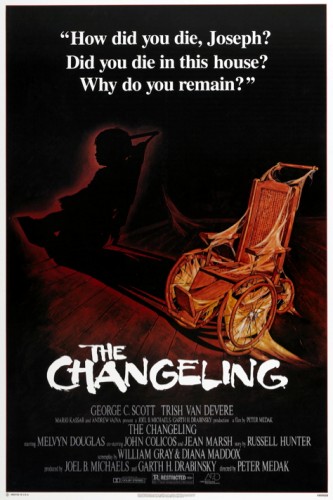 THE CHANGELING (1979)
THE CHANGELING (1979)
Though woefully uneven as a filmmaker, director-for-hire Peter Medak’s acclaim should have risen dramatically with The Changeling, a solid horror sleeper that won 1980s Genie Award for Best Picture. The intelligence lies in the direction – few (if any) thrillers have taken a central cliché as worn-thin as the haunted house and reinvented it as ingeniously as Medak does here. Working from a script by B-picture veteran William Gray and Diana Maddox, Medak uses as one of his central characters the possessed home into which John Russell (George C. Scott) moves, and (via intelligent aural and visual choices, and a careful avoidance of the sensationalism that Stanley Kubrick employed in The Shining) somehow manages to create one of the most authentic and fully realised onscreen environments in horror movie history.
Save a single effects-heavy supernatural sequence, everything is wisely understated but ever chilling – from the faint tinkling of the piano that Russell overhears emanating from the parlor to the soft bouncing of Russell’s dead daughter’s rubber ball down an empty staircase late at night, Medak fills the frame with unforgettable sounds and images. If Medak and Gray had approached the first act with a bit more aesthetic subtlety, The Changeling might have been spectacular instead of merely superb. Still, on its own terms and despite scattered weaknesses, The Changeling’s accomplishments are quite admirable – it remains one of the most unsettling supernatural thrillers in recent memory. And the wrap-up never fails to satisfy. This gore-free movie can really sink its teeth into the viewer and chill its audience to the core. Give it a chance.
DAWN OF THE DEAD (1979)
Director George Romero’s epic sequel to his legendary Night Of The Living Dead has firmly established itself as the equal of its ground-breaking predecessor. Though shot in 1978 (ten years after the first film’s release) Dawn’s story begins as if the events in Night had happened only the night before: after shambling armies of the recently-dead take over every major city, the US government imposes a state of martial law, sending in special National Guard units to attack and destroy zombie infestation where they find it. Two members of one such unit, Peter (Ken Foree) and Roger (Scott Reiniger) have been tasked to overthrow a nest of zombies in a Pittsburgh housing project (one of the film’s most explicitly gory scenes).
When the job turns ugly and Peter is forced to terminate his own berserk, racist commanding officer, the pair decide to split the outfit with the help of his friend Stephen (David Emge), a helicopter pilot for WGON-TV, and the station’s floor manager, Stephen’s girlfriend Frances (Gaylen Ross). Together they steal the station’s helicopter and head for less-populated areas, but after some narrow scrapes with flesh-hungry redneck ghouls in the country outside Harrisburg, they opt for a more secure hideout. Eventually they find the perfect solution: a massive, sprawling shopping mall. After the lengthy process of purging the building of zombies is complete, the four secure themselves snugly in the miniature city, consigned to live out their lives in a dull but cushy consumer’s paradise. The subtext comparing the behavior patterns of the ghouls to those of American consumers is clear, but not overdone: “It’s some kind of instinct, this was an important place in their lives.”
THE EVIL DEAD (1981)
This auspicious feature debut from Sam Raimi – shot on 16mm in the woods of Tennesse for around $350,000 – secured the young director’s cult status as a creative force to be reckoned with. The nominal plot involves five vacationing college kids – Ash (Bruce Campbell), his girlfriend Linda (Betsy Baker), and their classmates Cheryl (Ellen Sandweiss), Scott (Hal Delrich) and Shelly (Sarah York) – making a stopover in an abandoned mountain cabin surrounded by impenetrable woods. Before settling in for the night, they come across an ancient-looking occult tome filled with dense hieroglyphics and macabre illustrations, a dagger fashioned from human bones, and a reel-to-reel tape recorder.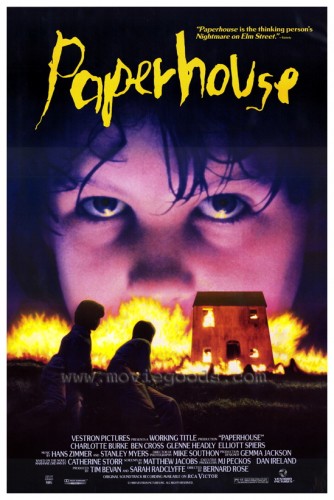
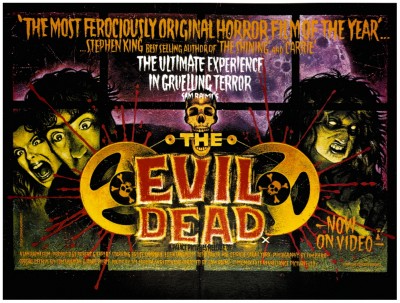 The taped message, dictated by a professor of archaeology, describes the contents of the Sumerian ‘Book of the Dead’ filled with incantations used to bring otherworldly demons to life, giving them license to possess the living. Despite the shoestring production values, Raimi has fashioned a tight, lightning-paced fever dream of a movie, filled with operatic overacting and outrageously gory effects that give the project a comic-book feel. Based on an earlier 8mm short titled Within The Woods, this feature version was fraught with distribution difficulties before finding its first audience overseas. After considerable word of mouth (and a glowing endorsement from horror author Stephen King), the film became a hit on home video, where it achieved further notoriety thanks to its highly-publicised banning in Britain amid the notorious ‘Video Nasties’ censorship campaign.
The taped message, dictated by a professor of archaeology, describes the contents of the Sumerian ‘Book of the Dead’ filled with incantations used to bring otherworldly demons to life, giving them license to possess the living. Despite the shoestring production values, Raimi has fashioned a tight, lightning-paced fever dream of a movie, filled with operatic overacting and outrageously gory effects that give the project a comic-book feel. Based on an earlier 8mm short titled Within The Woods, this feature version was fraught with distribution difficulties before finding its first audience overseas. After considerable word of mouth (and a glowing endorsement from horror author Stephen King), the film became a hit on home video, where it achieved further notoriety thanks to its highly-publicised banning in Britain amid the notorious ‘Video Nasties’ censorship campaign.
PAPERHOUSE (1988)
Eleven-year-old Charlotte Burke, the neglected daughter of Ben Cross and Glenne Headley, passes out on the school playground and dreams of visiting a house she’d previously drawn in her composition book. She imagines another visit to her ‘paper house’ while playing hide-and-seek.
Experimenting, Burke draws a figure in the window of the house; the next time she dreams, she meets a young boy, as lonely as she. Convinced that she wields a large degree of power in her pencil, Burke draws a picture of her father, Cross, hoping that in doing so he will return home. But Burke is dissatisfied with the picture, and crosses it out, whereupon Cross shows up in her dreams as a murderous stalker. What happens next is a maelstrom of psychological horror, told completely from the child’s point of view. Paperhouse is based on Marianne Dreams a novel by Catherine Storr.
Stephen King’s Favourite Horror Films
 Horror News | HNN Official Site | Horror Movies,Trailers, Reviews
Horror News | HNN Official Site | Horror Movies,Trailers, Reviews


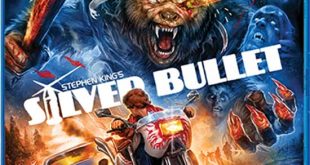

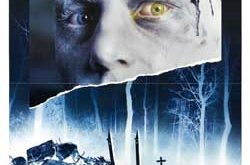
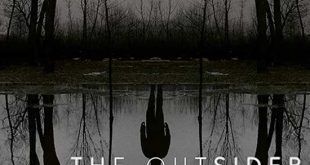
‘The late Roger Ebert’? Someone ought to tell him.
You’re absolutely right Adam, of course I was thinking of Roger Ebert’s long-time partner-in-crime Gene Siskel, who passed away in 1999. Unfortunately, a mere nine months after your above comment, Roger Ebert passed away in April 2013.
I disagree with the review of The Changeling. It is hands down the very best haunted house film ever made. What works fantastically is how George’s character doesn’t run around screaming or trying to avoid the issue. Instead he confronts it and works to learn more about the unknown.
10/10. Sublime.
Thanks for reading! I thought I was rather positive concerning The Changeling. It is indeed an excellent film, but there are a number of other titles in the running for Best Haunted House including The Haunting, The Innocents, Hell House, and The Amityville Horror.